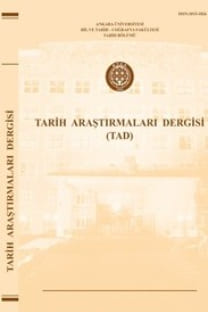Ortaçağ Avrupasının dini ve sosyal hayatına iliskin bir bildiri: Duplex Legationis Edictum
789 yılında Karolenj İmparatoru Charlemagne tarafından çoğunlukla manastır hayatıyla ilgili talimatlar vermek üzere hazırlanmış olan bu bildiri 37 maddeden oluşmaktadır. İlk 16 madde Ortaçağ Avrupa’sındaki en yaygın manastır tarikatı olan Benedikten Tarikatı’nın “Kural (Regula)”‘ı temel alınarak yazılmıştır, geri kalan maddeler ise sosyal, ekonomik ve kültürel hayatla ilgilidir. Bu nedenle ilk bölümün değerlendirilmesinde Benedikten Kuralı’ndan yararlanılmıştır. Bildiri bütün olarak incelendiğinde hem bir idareci olarak Charlemagne’ın ülkesindeki dini ve sosyal hayata verdiği önem derecesine hem de Ortaçağ Avrupa’sının dini ve sosyal hayatına ilişkin ipuçlarına rastlanmaktadır. Bildiri vasıtasıyla Ortaçağ’da yasal olmayan geçiş ücretleri alındığı, bazılarının ceza aldıkları halde para ödeyerek bu cezadan kurtulabildikleri, dini kitaplar kullanılarak gelecekten haber vermeye çalışıldığı, rüşvet alındığı ve sarhoşluğun hoş karşılanmadığı gibi bilgilere sahip olunmaktadır. Sonuç olarak bu bildiri Ortaçağın dini ve sosyal hayatına ilişkin önemli bilgiler içermektedir
Anahtar Kelimeler:
Ortaçağ, Sosyal Hayat, Bildiri
A Capitulary Relating To The Religious And Social Life Of The Medieval Europe: Duplex Legationis Edictum
This capitulary, prepared by the Carolingian emperor Charlemagne in 789 with the aim of giving instructions mostly about monachism, has 37 items. The first 16 items were based on the Rule (Regula) of The Benedictine Order, the most widespread monastery order of the Medieval Europe, and the rest of the items were about social, economic and cultural life. Thus, Benedictine Rule was used for the evaluation of the first part. When the capitulary is examined as a whole, we can see clues of both how important the religious and social life was for Charlemagne as a ruler and also clues about the religious and social life of the Medieval Europe. Through the capitulary, one can learn information such as: some illegal passage fees were charged in the Middle Ages, some people could get away from punishment by paying money, people tried to read the future from religious books, bribe was common and getting drunk was not approved. As a result, this capitulary contains valuable information about the religious and social life of the Middle Ages.
Keywords:
Middle Ages, Social Life, Capitulary.,
___
- Ad Monachos Magistri Regula, Auctor Incertus, MPL, vol.: 88, 943-1052D. Capitula Omnibus Cognita Facienda, MGH Leges II, Cap. I, no.: 57, Ed.: A.
- Boretius, Hannover, 1883Abbot Parry, Trans., The Rule of Saint Benedict, Gracewing, 1990.
- Capitulare Missorum in Theodonis Villa Datum Secundum, Generale, MGH Leges II, Cap. I. no.:44, Ed.: A. Boretius, Hanover, 1883.
- Capitulare Missorum Niumagae Datum, MGH, Leges II, Cap. I, no.: 46, Ed.: A.Boretius,Hanover, 1883.
- Duplex Legationis Edictum, MGH, Leges II, Capitularia Regum Francorum I, no.: 23, Ed.: A.Boretius, Hanover, 1883.
- Einhard, Vita Karoli Magni, MGH, SRG, US, no.: 25, Ed.: O. Holder-Egger, Editio Sexta, Hanover, 1911.
- Responsa Misso Cuidam Data, MGH Leges II, Cap. I., no.: 58, Ed.: A. Boretius, Hanover, 1883. İkincil Kaynaklar
- Barry, P., Trans., Saint Benedict’s Rule, HiddenSpring, USA, 2004.
- Crosby, A. M., The Benedictine Handbook, Canterbury Press, Great Britain, 2003.
- Doyle, L. J., Trans., The Rule of Saint Benedict, USA, 2001.
- Dreuille, M., The Rule of Saint Benedict and The Ascetic Traditions From Asia to The West, MPG Books Ltd, England, 2000.
- Garver, V. L., Women and Aristocratic Culture in The Carolingian World, Cornell University Press, USA, 2009.
- Geary, P. J., Reading in Medieval History: The Early Middle Ages, University of Toronto Press, Canada, 2010.
- Gregory The Great, Life of Our Most Holy Father St. Benedict, Thomas Baker, London, 1898.
- Kardong, T., Benedict’s Rule: A Translation and Commentary, The Liturgical Press, USA, 1996.
- Kutsal Kitap, Kitab-ı Mukaddes Şirketi, İstanbul, 2006.
- Nelson, J.; “Aachen As A Place of Power”, Topografhies of Power in The Early Middle Ages, Ed.: Frans Theuws, Mayke De Jong, Carine Van Rhijn, Brill, Netherland, 2001.
- Niermeyer, J. F., Mediae Latinitatis Lexicon Minus, Brill, Netherlands, 1976.
- Stevenson, J., Women Latin Poets, Oxford University Press, USA, 2005. Verheyen, B., Translated by http://www.ccel.org/ccel/benedict/rule2/files/rule2.html#ch59. Rev., The Rule of St. Benedict
- Wheeler, A. J., “Gongs and Bells”, Encyclopedia of Religion and Ethics Part11,Ed.: J. Hastings, J. A. Selbie, Macmillan, 2003.
- ISSN: 1015-1826
- Yayın Aralığı: Yılda 2 Sayı
- Başlangıç: 1963
- Yayıncı: Levent KAYAPINAR
Sayıdaki Diğer Makaleler
Tanzimat Döneminde Osmanlı Hariciye Nezâreti’nin Ermeni memurları
Yılmaz Kurt - Muhammed Ceyhan, Osmanlı Paleografyası ve Osmanlı Diplomatikası
A. Nükhet ADIYEKE, Nuri ADIYEKE
Trakya’nın isgali ve Yunan Mezalimi (1919-1922)
Ortaçağ Avrupasının dini ve sosyal hayatına iliskin bir bildiri: Duplex Legationis Edictum
Emevîler ve Abbasiler Döneminde önemli bir Sugûr Sehri Tarsus
Kültepe Tabletlerinde Geçen hašlātum Kelimesi Üzerine Bir Değerlendirme
Romalı Triumvir Marcus Antonius’un Anadolu’da Siyasi Düzenlemeleri
